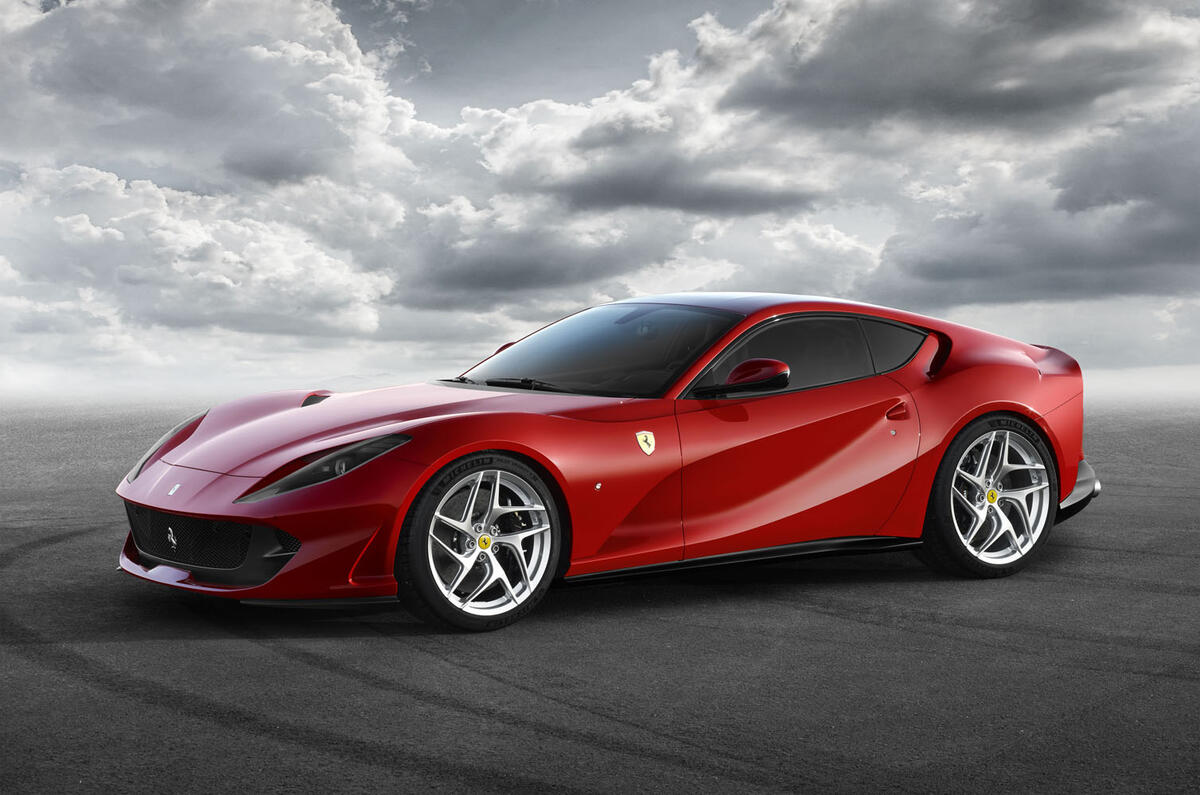Ah, welcome, Ferrari 812 Superfast.
You’ll be the new Ferrari, won’t you? Your CV suggests you’re super, and I have no doubt believing you’re almost certainly fast. Sit down, make yourself comfortable, and answer me this: how much, exactly, is too much? Power, I mean. I always thought your predecessor, the F12, had a more than ample 730bhp. Then the F12 tdf turned up with 770bhp. And now you sit here, placing 789bhp on the table, while reassuring me that this unending power growth is absolutely fine. So, where do you see yourself in five years’ time?
Honestly, dear reader, where does it all stop? Sometimes in the media we confidently predict that a certain power output will be the end of things. The pinnacle. The ultimate. The McLaren F1. The Bugatti Veyron. And then what happens?
An everyday McLaren rocks up with more power than an F1, and there’s about to be a new Bugatti with 1492bhp – almost 50% more than the first Veyron. It’s time to admit that we were wrong and that there won’t be an end to it. Don’t get too used to the 812’s 789bhp. Not because it represents an apogee from which we’ll sensibly return, but because 800bhp is right around the corner.
It turns out that cars, you see, just mirror life, where unending growth, power and complexity are the overriding trends. With due apologies to any creationists, once we were amoeba, yet now many of us stand over six feet tall. The first computers used to crack wartime codes were the size of rooms, but add all the computing power of every wartime computer together and you’d barely have enough oomph to play a video of a cat falling off a shelf.
Power growth is all around us, and it has been since the dawn of times. How many calories do you – dear reader, not Ferrari – consume a day? I wouldn’t like to guess (you’re looking well), but I’ll bet it will be more than the average of, say, 100 years ago. The thrust of an Airbus A380 knocks aside anything Louis Blériot would likely have imagined. More power. More force. More lifeis as inevitable as the arrival of the morning sun.
The average family car? Thirty years ago a middling Ford Escort would have had 74bhp from a 1.4-litre engine. Today you could comfortably double that. As recent as 1991, a luxury car like a Mercedes-Benz S-Class with a 5.0-litre engine made around 250bhp and 288lb ft. Today you can buy an S-Class with almost as much power as a McLaren F1 – enough to make a Vauxhall Lotus Carlton feel like a pram. The Carlton once offended the world; today nobody is outraged that a Tesla Model S can give you, silently, 603bhp and 713lb ft.







Join the debate
Add your comment
Pointless
Pointless
Dear reader.